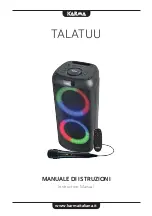
23/30
ALFA IN a.s ©
www.alfain.eu
14.
Shift the torch with the pilot arc close to the material, the pilot arc
will change to cutting arc automatically. If you do not start cutting within
2 s, the arc will snuff off. If the torch delays during the cutting from the
material, the arc will snuff off. In case that the machine is in mode
Cutting material with gaps – switch
A5
position
, cutting arc will
change to pilot arc and if you
do not start cutting within 2 s, this arc will
snuff off.
15.
To finish the cutting process, release the torch trigger.
9. HAND CUTTING
1. Pressing the torch button ignites the pilot arc. The torch must then be
immediately attached to the material to be cut. At this point, the main arc
between the torch and the material being cut starts to burn.
2. It is necessary to move the torch at a uniform speed by pulling the nozzle
directly over the material, its value depends on the thickness and type of
material to be cut and the size of the cutting current. We recommend to
test first.
3. Metal cutting can be carried out in all possible positions (horizontal,
horizontal, overhead, vertical ascending and descending and also across
in the above positions) if the appropriate parameters are selected,
however, if possible, a horizontal cut is preferred. In other positions, the
operator is at increased risk from flying droplets of molten material.
4. If possible, we recommend starting at the edge of the material. In case you
are cutting a hole or need to start from the centre of the material, tilt the
torch head slightly and gradually straighten it to a vertical position so that
the spraying material does not block the cutting tip, (see Fig. 11) This
working procedure must always be followed if the thickness of the material
to be cut exceeds 3 mm.
5. If the cut is made in a corner or angle (see Fig. 12), we recommend using
an extended electrode and cutting tip. However, the lower cutting power
compared to the short version must be taken into account.
Fig. 11 Lateral start
Fig. 12 Cutting in the corner








































